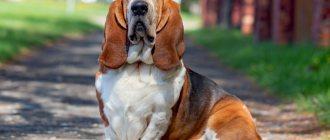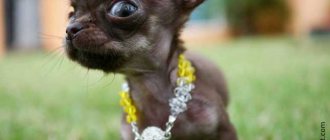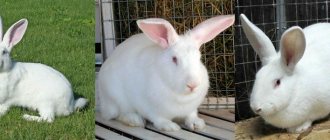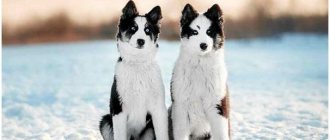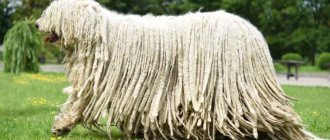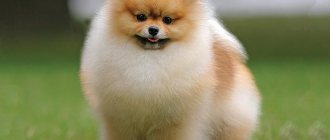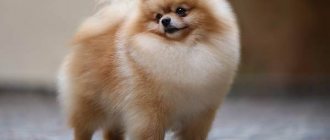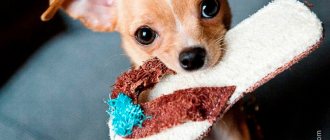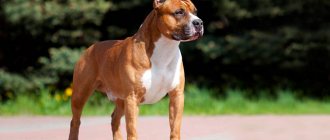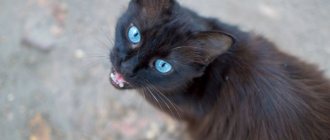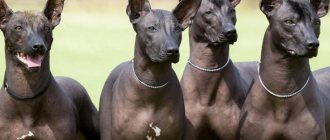Hounds are a specially designated group of hunting breeds. They are characterized by: long, drooping ears, a developed sense of smell, and a special sense of smell. Some of them are suitable for working in a flock, called welded hunting. Some breeds are distinguished by their ability to hunt alone.
Voice is one of the powerful tools for notifying the owner about prey. Hound breeds skillfully use, each has its own unique, characteristic timbre and pitch. Some were bred in the Middle Ages. Some dogs are on the verge of extinction due to the world wars of the 20th century. Dog handlers are trying to preserve rare dogs. The Middle Ages, the Renaissance, then the end of the 19th century - stages of selection work.
For centuries they have been used to hunt hares, foxes, wild boars, and deer. Today there are more than 50 breeds in Europe and the USA.
Classification
They differ in the methods of hunting the animal:
- Weld hunting, when the dog works in a group.
- Working on a blood trail. Allows you to pursue an animal wounded by a hunter and catch game.
- Trace rocks. Due to a particularly developed sense of smell, they track prey, find holes, and drive them in.
- For hunting on foot. They recognize traces and notify about their location.
- Complex baiting, catching an animal. Horses are used for riding hunters, the pack accompanies, finds the wounded animal or reports the victim with a sonorous bark.
A special group is gun dogs. They are not afraid of loud sounds or gunshots. Their task is to find prey and hunt down the beast.
American Foxhound
The breed was developed in America to detect wild boars and foxes. Hence the second name of the breed - fox hound. In addition, they can work to corral possums, bears and raccoons. American Foxhounds have a well-developed sense of smell, allowing them to navigate in forests or fields. Males reach 63 cm at the withers, and females - 61 cm. The animal is distinguished by good intellectual abilities, a strong physique and excellent physical characteristics. The American is considered a balanced dog that gets along well with its relatives and family members.
TOP 42 best breeds of hound dogs
Major representatives
American Foxhound
The official symbol of the state of Virginia (USA). Bred for group fox hunting. The parataya hound is distinguished by well-coordinated muscles that look prominent, high limbs, a toned belly, and a strong neck. The dog is large, hardy, with a stubborn character. Constant stress is required to avoid destructive behavior.
American Blue Gascony Hound
A rare breed of dog. The main differences: massive body, tall height, heavy weight. Capable of barking loudly and loudly. Active disposition. The dog plays excitedly with other dogs, likes to run a lot and catch up. Can jump high and follow commands. For a long time he remains a restless dog with the behavior of a puppy.
American Hound (Coonhound)
A breed for hunting raccoon, puma, lynx in the USA. They drive prey into trees. Differs in height up to 70 cm, low weight. Runs easily, covers distances, and works calmly in a group. There are 6 varieties of the breed, differing in color. The muscles are powerful and can withstand physical activity well.
English Foxhound
One of the most famous among large hound breeds. Selective breeding began in England for hunting (16th century). He knows how to work as a pack, driving the animal to exhaustion. The wool fits tightly and is easy to care for. The limbs are strong, the stomach is tucked. The neck is elongated and powerful. Capable of developing great speed, does not know fatigue. Hunting sense of smell is reduced.
Anglo-Russian hound
Another name is “Russian Piebald Hound”. The height of males reaches 67 cm. Weighs no more than 35 kg. When chasing prey (hare, fox), it does not hear commands. Often gets lost in the forest, gets too carried away with work. The body is elongated, the color is similar to the beagle, Estonian hound, Russian hound. It is distinguished by brighter coat colors, heavy stride, and ear shape.
Ariège Hound (Ariegeois)
Medium continental breed. The world wars almost stopped breeding work on selecting qualities. Breeding work is currently underway to restore the livestock. No standards have been developed. There are differences between males and females in weight, height, and massiveness.
The muzzle is similar to a dachshund with an elongated nose without a pronounced transition to the frontal bone. The color is white with black spots. Speckled spots on the body and legs are allowed. The coat is short, not adapted to cold weather, and has hypoallergenic properties. The body is elongated, the tail is set low. The character is calm and balanced. He doesn’t “voice” without doing anything.
Biyi
An elegant, large-sized, stately hound breed. Long limbs look organic. An inquisitive look reveals a curious, obedient dog. Likes to fight and show dominance due to his jealous nature. Loyally obeys the owner. The coat is hard, the color is light with spots. She has a loud bark. Able to intonate his voice.
Bloodhound (Saint Hubert's dog)
An ancient Belgian breed from the “large hounds” group. Bred for guarding monasteries and hunting with pursuit. Height is about 68 cm. The bones are powerful, the muscles are well developed. The tail is set high. The structure of the head and muzzle is similar to that of a basset hound. Trumpet barking can scare the enemy. Used for search and welded hunting. Prone to obesity. You need constant exercise and a moderate diet.
Large Anglo-French tricolor hound
Known since the 16th century. Became famous in the 19th century. It has a specific color with spots of white, brown, and black. The muzzle is elongated, the ears are drooping. The occipital protuberance is clearly visible. The puppy grows up to 72 cm. Weight should not exceed 35 kg. Moves easily, runs and jumps a lot. A tireless breed, capable of chasing down prey in a group.
HamiltonSteware
Swedish hound dog. Similar to the “Estonian” in appearance, but taller. Hunts on its own, without the help of its fellows. It pursues for a long time, and howls to announce its discovery. Suitable for home and family protection. He loves his owner and quickly learns commands. A companion dog for those who love activity.
Dalmatian
The dog comes from Croatia. A large-sized dog with characteristic numerous black spots on a white coat. The limbs are developed and look organic. The body is slightly elongated, the head is set high. It serves a person well, but is capable of aggression, disobedience, and overeating. He barks loudly and tries to attract attention. A jealous breed that does not tolerate being around other pets well.
Otterhound (otter hound)
Large wirehaired dog from Great Britain. Height up to 69 cm in males. Chases game, hunts wounded animals, and tracks prey. Different climatic conditions are not scary. It is endangered because the breed became the progenitor of modern Airedale Terriers.
Poitevin
French breed of hound dogs. The unusual appearance is emphasized by its stateliness, elongated head shape, large stature and long thin tail. The body is decorated with characteristic muscle relief. The limbs allow you to run and jump quickly and tirelessly. Character loyal, active. She is known for her special vociferousness and ability to “sing.”
Rhodesian Ridgeback (African Lion Hound)
A hunting and guard breed originally from Africa. Height at the withers is up to 70 cm. The body is muscular, covered with dense short hair of brown shades. A distinctive feature is the ridge on the back, where the hair grows in the opposite direction. Can run fast, chase, attack. Selects one owner. Needs long, many-hour walks to stay in shape.
Russian hound
The breed is not recognized internationally. Valued for strength, tireless character, sonorous voice. The exterior resembles a wolf. The coat is thick with a rich undercoat, which allows it to withstand cold winters. The peculiarity is to keep your head low.
It looks as if it is constantly tracking its prey using a blood trail. On the neck there is a nape - an area covered with longer axial hair. Runs after the animal at a gallop. During pursuit it moves at a trot. Suitable for hunting hares and foxes. It only works in packs.
Porcelain hound (porselen or noble royal)
The oldest French breed that has received official recognition. A rare dog, on the verge of extinction. The exterior is noble, emphasized by the white coat color and red spots. The stomach is tucked, the limbs are thin, the sternum looks harmonious. A keen hunting sense helps to participate in hunting foxes and wild boars. The character is active and lively. Suitable for keeping in a country house.
Black and tan coonhound
The raccoon hound dog, originally from the USA, is the only official representative in the Hunda group. Recognized by the international community. Gives the impression of a powerful, large black dog. Tan marks are the hallmark of the breed. All shades of brown are allowed. Friendly, sincere, attentive dog when not hunting. During work, he is not distracted, performs tasks accurately, and quickly copes with the search for prey.
Estonian hound
Powerful hound dog. Externally it looks like a large beagle. Belongs to the “Gun Dogs” section. The legs are strong, the body is elongated, the tail is set high. Can bark in a “trumpet” voice. Friendly towards other pets, but can be aggressive in play. The owner is obliged to control behavior on the street and at home.
Medium-sized hounds
Austrian Smooth-haired Hound
Refers to a rarely seen representative of medium-sized hounds. Its color resembles a Doberman, Rottweiler, or Dachshund. The coat is smooth, tight-fitting, and has no white spots. The fluffy undercoat helps to withstand different climatic conditions. Bred for hunting in mountainous areas.
Alpine dachshund braque
A small representative of the “Welded” subgroup. Suitable for hunting wounded animals (boars, roe deer, deer, rodents). Height is average, up to 42 cm at the withers. The body is elongated. Unlike the dachshund, the limbs are straight, the muzzle is more square. The color is bright reddish shades with black markings on the tail, paws, and tips of the ears.
Bavarian mountain hound
Medium-sized breed from Germany. The height of the male's withers is up to 52 cm. It was obtained by crossing the Tyrolean and Hanoverian hounds. Serves as a hunting, service breed for searching for missing people in mountainous areas. The head is large, the ears are long. There is a dark mask on the muzzle. The skeleton is powerful, the appearance is muscular, fit. Instincts for gun work and wild boar hunting are well developed. Works actively next to a person, has high intelligence, learns quickly, and does not require care.
Dunker
A hound from Norway, 54-58 cm tall at the withers. The body is slightly squat, the paws are large. Exclusively “hare” dog. Focuses on the terrain, pursues, runs quickly on snow and ice. Loves the owner, loyally accepts other dogs.
Spanish Hound (Sabueso Espanol)
Selective breeding from northern Spain. The breed is designed for trail hunting. Height is from 52 to 57 cm. A unique feature is long ears that hang below the neck. The body is elongated, the body is lean, the tail is thick at the base. The color is reddish-piebald with marbling. When raising a dog, the owner faces a number of problems: the ability to make independent decisions, excessive activity, and the inability to choose one owner.
Italian Hound (Segugio)
During the Renaissance, work on selection began, and it began to be used as a hunter of wild animals in difficult thickets. Then it was used to catch hares, foxes, and small rodents. There are short-haired and wire-haired hounds. The height at the withers of males is about 58 cm. The breed has excellent orientation, quickly learns commands, and serves the family as a watchman. Its unique long ears give it the appearance of a large-sized Basset Hound.
Lithuanian hound
Restored rock in the middle of the 20th century. Not recognized by the International Canine Union. Too few dogs do not allow it to become massively popular, as it was before the world wars. The dog is large and corpulent. Size at the withers is from 52 cm. Light weight (20-30 kg) makes it nimble, agile, and fast. Externally, it looks like a Rottweiler with an elongated nose, ears, and a tucked belly. Color black with red tan. Hunts large wild animals.
Griffon Nivernaise (boar hound)
The main difference from other hounds is their shaggy, tousled coat. It protects the skin and makes the breed suitable for all weather conditions. Cultivated for wild boar hunting. He is tall and has powerful muscles. A brave dog is ready to chase a large animal. A tireless “companion” of a gambling hunter. A calm, self-possessed character helps to learn commands and behave with dignity.
Polish Hound (Polish Ogar)
Bred in Poland. A medium-sized dog that has been the subject of legends since the 13th century. Coat color ranges from black and tan to various shades of brown. The owner of a vocal treble. Knows how to fearlessly protect and protect. During the drive, it surrounds prey and attracts attention by barking. Understands spoken speech and is sensitive to intonation.
Serbian Hound (Balkan Hound)
The homeland of the breed is the Balkan Peninsula, where hunting for game and forest wild animals is popular. Distinguished by the color, which is lighter on the paws and sternum. The ears are medium in size and hang down. The back and sternum are wide. The legs are muscular. The belly is lean. The breed is not afraid of long hikes. Devotion, an inquisitive mind, and a developed sense of smell make her an indispensable human assistant.
Slovakian hound
Color black with red tan. Used for tracking large prey, they work especially well when hunting wild boar. The body is long and squat. Its drooping ears make it look like a large dachshund with a spaniel face. A friendly dog for which the attention of the owner is important.
Smålandstevare
It is called the "Slomand Hound". The standards are described in the Middle Ages. Until the 20th century, it was considered a popular hunting breed for catching hares, foxes, and other rodents. The sizes are average. Light weight allows you to run instantly to catch up with a shot animal. Six three-layer, black with beige tan. Harsh winters and cool summer nights are not scary. A noble dog that understands gestures and words, without aggressive attacks.
Transylvanian Hound (Erdeli-opo)
Tracking hunting dog from Hungary. The body is taut, the tail is elongated, the sternum is wide. The coat is dense, thick, and short. The character is aggressive, complex. Suitable for experienced dog owners only. The task is not to let yourself be overpowered. Then he will be a confident dog, capable of attacking the animal first.
Finnish hound (suomenajokoira)
A dog from Finland for hunting foxes and hares. Height is no higher than 56 cm. The body is lean, elongated with a tricolor color. Having discovered traces of the animal, he finds its resting place, barks at it, and drives it to its owner. Works alone, is capable of running away for many kilometers and returning. Outside of hunting, they have a phlegmatic attitude and accept other pets without aggression.
Haldenstover
A mixture of Foxhound with various representatives of the best hound breeds in Europe. It is distinguished by its ability to withstand harsh winters. The coat is dense, thick, and short. In winter, it is covered with an undercoat that protects from the cold. The color is white with small black and large brown spots. It follows its prey for a long time, pursues it, and covers long distances. Follows the trail and announces the discovery loudly.
Harrier (hare hound)
A specially bred breed of English origin for hunting hares. Average height, weight no more than 27 kg. Muscular legs allow you to instantly develop speed and chase rodents. Endurance is stable, mentality is adequate, trains well, gets along with other animals. Constant physical activity is needed.
Swiss hound
A dog with long ears. They start at eye level and end below the neck. This gives an aristocratic look. The body is elongated, the tail is thick at the base, and the angle of transition of the hock joints is noticeable on the hind legs. This allows you to develop greater speed for welded, single hunting.
Small dogs
Basset Hound
A squat dog with a lot of skin folds. The leisurely breed is suitable for hunting medium-sized animals and works well in a team of relatives. It is distinguished by its trumpet voice, powerful paws, and strong muscles.
Beagle
Small sized hunting dog of British origin. An active, restless worker with a cheerful disposition. Well trained, quickly learns commands. Rarely displays aggression towards others. A sonorous voice during pursuit helps hunters focus on prey. Gets along well with other pets. Suitable for keeping in an apartment.
Great Blue Gascony Hound
Bred in France. The appearance is squat, stretched out, reminiscent of a large dachshund. The height at the withers is no more than 35 cm. It differs in color with spots on the body. Howls loudly when hunting. Used to corral wild boar, deer, and rabbit.
Drever
Dachshund breed from Sweden. An elongated, squat body, short legs, long ears, a pointed nose - this is what is typical for the “brakk” subsection. Color black and white with brown spots. The coat is smooth. Sternum, muscles developed. Loves independence, can conflict.
Two subtypes in the breed
Basset Griffon Vendean
There are 2 types of French hound: small and large. The wool is hard and tri-colored. The predominant shade is white. Overly active, friendly. Suitable for hunting large animals, chasing and driving prey for hours. Unpretentious at home, raised without problems, friendly with other pets.
Laufhund
One of the varieties of Swiss hounds bred in the Middle Ages. They are divided into 2 subspecies: medium, small. Sizes from 33 to 59 cm. The body is stretched, the legs are powerful. Capable of running for a long time and chasing prey in a group of relatives. A high level of intelligence, obedience, and calmness make the dog a watchman and a hunter. The breed must be a “working” breed, which will help preserve its natural abilities.
Swiss Laufhund
The head and body are graceful, elongated ears give a funny look. The eyes are highlighted with black edging. There are small and medium-sized Bernese hounds. They know how to obey unquestioningly, follow commands, and follow the scent. They react calmly to shots. They do not get along well in the house with other pets.
Laufhund
These hounds originated in Switzerland and have a rich pedigree. Hunters use them when driving wild boars, foxes, roe deer and hares. The animal tolerates traveling long distances well and feels best in a field or on a plain. It is distinguished by its intelligence and sociability, which allows it to well understand the desires of the owner.
Laufhunds in the process of formation were divided into two subspecies. Their description is as follows:
- Tall-legged. Their height varies from 48 to 59 cm in males and from 46 to 57 cm in females. Weight does not exceed 23 kg.
- Low-legged. The height of males is 25-41 cm, females - 32-38 cm. Weight no more than 18 kg.
A characteristic feature of Swiss hounds is their deep eyes, outlined with a black border.
Features of hunting
Working with pointing dogs is the oldest fishing method. It was once the privilege of the wealthy aristocracy. Not everyone could afford to keep a pack of dogs.
For mining it is used:
- one dog;
- bow of 2-3 individuals;
- small pack (up to 5-7 dogs);
- big pack.
The most effective pair is a monobreed coupling of a female and a male. The dog is more aggressive towards the animal. The opposite sex hunts responsibly and patiently. They complement each other harmoniously.
The following are considered important qualities:
- viscosity;
- running speed;
- developed sense of smell;
- acute hearing;
- sonorous voice.
Each hound breed has specific characteristics of hunting a particular animal. Depending on the fishery there are:
running gear, when the shooter, the dogs are constantly on the move, chasing prey; a motionless hunt, during which the animal is driven out to a certain place where shooters and hunters are hidden.
One of the characteristic features of hunting with hounds is the services of a huntsman. He knows the area, fauna, and habits of wild animals well.
Bloodhound
A type of hound appeared in Belgium, where it was used not only as a hunter, but also as a detective. Today, the bloodhound is intended for driving foxes and small game. The name of the breed translates as blood dog and gives rise to several theories about its origin. According to the first version, bloodhounds got their name due to their ability to search for a wounded animal by the smell of blood. According to another theory, the name emphasizes the purebred, noble origin of the breed.
Animals have pronounced gender differences: females are significantly inferior to males in size. Their height is 62 cm, and for males - 68 cm. The weight of females is 40-48 kg, males - 46-54 kg. The dogs perform well both in hunting conditions in open areas and in difficult terrain.
Features of behavior and education
From an early age, hound dogs need socialization. They have natural abilities: speed, endurance, strength, activity. The owner is forced to maintain what is inherent in genetics and centuries-old selection.
While walking, you should pay attention to possible attacks towards other pets and stop the desire to dominate in time. They often have the ability to run away and get distracted. The owner must teach him to attract attention at the first gesture or word.
You can’t let yourself feel more important than a person. They do not tolerate loneliness or boredom. Owners often complain about destructive behavior. This is how the dog entertains itself.
Physical activity will help avoid this. The dog must be exhausted and tired. On active walks, he wastes energy and keeps fit.
Harrier
This dog breed is also famous mostly in its homeland in England. The harrier is distinguished by its strong build and stockiness, despite the fact that it is intended for driving small, agile game. This is explained by the fact that animals were once used during horse hunting, which required from them not only agility and speed, but also great endurance, the key to which was muscle mass. Harrier is of medium size: height varies from 48 to 53 cm, and weight is between 20-27 kg. There are no pronounced gender differences among representatives of the breed.
How to choose
The first condition is to decide on the breed. Among the hounds there are dogs similar to each other, differing in place of origin and methods of hunting.
A healthy puppy purchased from a breeder has characteristic external features. Using them, it is easy to determine abilities and eliminate culling.
- The gait is confident, without skidding.
- Activity and interest in new things are increased. The dog is curious, tries to run faster than everyone else, and is not afraid.
- He shouldn't whine or bark a lot. This is a manifestation of cowardice and weakness of character. If it makes a growl, then you need to observe what caused such a reaction.
- The wool shines in the light and shimmers. The dog doesn't itch.
- The body is dense, smooth, without signs of excessive thinness.
- The nose is wet and cold. Eyes without streaks or purulence.
A conscientious owner of young dogs will tell you about the characteristics of the parents and show documents. He will explain in detail the features of upbringing and feeding. A veterinary passport is issued for each puppy, which records the vaccinations given.
It is advisable to exclude offspring from inbreeding. This leads to genetic diseases, weak immunity, and frequent culling.
Nurseries
The price of a hound puppy depends on many factors, from the seller (private advertisement or professional kennel) to the prevalence of the breed in the buyer’s country. Some of the kennels involved in breeding hounds include:
- Nazoro (Khimki);
- Altai (Altai);
- Skywood Hunter (Moscow).
If you take a pet from your hands, the cost of the puppy will be significantly lower. The price for popular breeds in Russia can be 10,000-15,000 rubles. However, the quality suffers, since the animal may have various defects. Licensed nurseries charge on average 25,000-30,000, but the cost of puppies of various breeds can reach up to 80,000 rubles.
Briefly about the main thing
- The distinctive features of hounds, regardless of size, are common: highly developed sense of smell, keen sense of smell, hearing, excellent vision.
- They are divided by type of hunting: single, welded, trail, gun.
- Suitable for hunting hares, wild boars, and foxes. Effectively drives into traps. With a loud, sonorous bark they announce victory over the beast and tie up the owner.
- The breed is characterized by developed muscles, strong limbs, and elongated ears. The general appearance is graceful, the gait is light.
- Large hound dogs develop well when kept in country houses. They need a large area. Small dogs live in urban environments and apartments without any problems.
- Not all breeds get along well with other pets due to their hunting instincts. They know how to make friends, play the role of a watchman, a companion for the owner.
Poitevin
The first representatives of the breed appeared in France, but due to the outbreak of a rabies epidemic, many animals died. Gradually, through the efforts of breeders, the population was restored, and dogs began to be used to corral wild boars and foxes. Poitevin can also participate in wolf hunting. The dogs are quite large, weighing up to 30 kg with a height of about 70 cm. They have a good sense of smell, allowing them to stay on the scent and pursue prey for a long time. Animals are easy to train; they are characterized by attentiveness and patience in learning new skills.
Health
The English Foxhound is one of the fairly healthy breeds. Among genetic diseases, diseases of the endocrine system (hypothyroidism), organs of hearing and balance (deafness caused by the action of the dominant merle gene), hematopoietic and lymphatic systems (Pelger-Huet anomaly, thrombasthenia), cardiovascular system (cardiomyopathy), skin and mucous membranes (primary seborrhea), liver and pancreas (chronic active hepatitis), nervous system (hound ataxia), skeleton (hip dysplasia, undershot, overshot).
Health
The English Foxhound is one of the fairly healthy breeds. Among genetic diseases, diseases of the endocrine system (hypothyroidism), organs of hearing and balance (deafness caused by the action of the dominant merle gene), hematopoietic and lymphatic systems (Pelger-Huet anomaly, thrombasthenia), cardiovascular system (cardiomyopathy), skin and mucous membranes (primary seborrhea), liver and pancreas (chronic active hepatitis), nervous system (hound ataxia), skeleton (hip dysplasia, undershot, overshot).
Nutrition
For a dog, the process of digesting food takes approximately 8 hours, and if it is given food only once a day, the animal will be hungry most of the time.
That is why the prescribed amount of food should be divided into 2-4 doses. Focus on your pet's preferences: some people like to eat a heartier meal after a night's sleep, while others, on the contrary, prefer to have a hearty dinner. The volume of each portion depends on this.
Now about the diet. Since the breed is a hunting breed, fresh meat comes first and, as a special delicacy, a juicy beef bone.
Eliminate small and hollow bones, such as chicken bones, from the dog’s menu completely. Milk porridge and vegetables are also important. Sometimes include dry food , but without fanaticism.
Prohibited:
- sweets and smoked foods,
- fatty pork meat,
- spices,
- salt,
- vinegar.
If your dog eats very quickly, this article will help you wean him off it.
Suitable nicknames
In order to be able to contact your pet without any problems while hunting, you need to choose a name wisely. Long, polysyllabic options are, of course, beautiful, but they are not suitable for quick response. Therefore, the nickname should consist of 1-2 syllables. For boys Russian hounds the following are suitable:
- Bushui;
- Call;
- Bassoon;
- Polaz;
- Bolt;
- Alarm;
- Bow.
For female hounds - real hunters - no less interesting names are suitable:
- Shumka;
- Magpie;
- Screw;
- Fun;
- Lute;
- Rogue;
- Cone.
The name can be chosen based on hunting qualities, for example, if the animal is very noisy, then it can be called Gong or Screamer.
Russian hounds on the hunt
Socialization
Noisy but not aggressive dog. The Austrian Bracket gets along well with his own kind. The dog hunts in a pack, so he is absolutely accustomed to his relatives.
The pet is friendly with strangers, but acts aloof. If you pet him, he will endure it; he will not impose himself with affection.
Like any self-respecting hunter, he considers living together with other animals beneath his dignity. The cats will be instantly strangled. There will be no wet place left from rodents.
Care
Foxhounds are pack dwellers and are not used to special care. It is enough to bathe the dog when it gets dirty and comb out the thick fur with a stiff bristle brush. The dog's shedding is moderate and occurs twice a year. You especially need to take care of your dog’s ears and clean them regularly.
Like any purebred dog, the Fox needs vaccinations and regular visits to the veterinarian.
Although country life suits the Foxhound like nothing else, his short coat does not allow him to survive severe frosts without constant movement. Therefore, in winter, the dog must live in a house or an insulated booth. To rest, the foxcat needs a spacious place, that is, the size of the booth must be appropriate.
Foxes are unpretentious when it comes to food, but the foxcat's diet should be balanced and moderate. Overfeeding will turn a sport hunter into a weakling, completely depriving him of the joy of life.
Foxes are quite hardy and healthy from birth; diseases arise precisely against the background of overeating and excess weight. The most common disease is gastric volvulus. In addition to problems with the digestive tract, dogs can experience diseases of the joints and spine.
This breed feels best in the company of its brothers, so it is advisable to have two Foxhounds at once. This will make life easier for the owner, since the Foxes themselves will keep each other company both at home and on walks.
Origin story
The English Foxhound is one of the oldest dog breeds. It was bred in England around the 16th century based on the Celtic hounds. Greyhounds, various terriers and a bulldog participated in the formation of the breed. The breed has been bred in purity since the mid-18th century. Since 1786, pedigree books of English Foxhounds have been kept in England, thanks to which the pedigrees of most modern dogs can be traced back to their first ancestors if desired. In the 17th century, the first English Foxhounds came to America and laid the foundation for a new breed - the American Foxhound. In Europe they served as the basis for the creation of many hounds. In Russia, with their participation, the Russian piebald hound was bred.
The peak of popularity of English Foxhounds came in the 19th century. In total there were about 7,000 flocks in England. They were also popular in Europe, for example, Napoleon III's pack consisted of more than 100 dogs. In 1964, the breed was officially recognized by the Fédération Cynologique Internationale (FCI). Today the English Foxhound has lost its former popularity. The breed is maintained only by the efforts of people called “hound masters.” They honor the traditions of breeding and using foxhounds - hunting hare and fox on horseback, accompanied by a pack of hounds. It is worth noting that outside the UK, foxhounds successfully hunt jackals, ungulates, lynxes and other animals.
Training
The English Foxhound, like any other hunting breed, requires regular support for its instincts and skills. This dog responds very well to firm and active training due to its loyalty to its owner and its keen, inquisitive mind. Usually there are no problems with training or learning to hunt, the main thing is to do it regularly and intensively.
The English Foxhound is the epitome of strength, grace, intelligence and an easy-going, playful nature. This breed is best owned by energetic people who love traveling , hunting or cycling or walking, that is, those who are able to provide these dogs with an active lifestyle.
If you have anything additional to share about the English Foxhound, then leave your comments or reviews that will help future owners understand this noteworthy breed.
Appearance
English Foxhound in 1915
Well balanced, powerful dog with clear lines. The head has a flat and wide skull. The occipital protuberance is well developed. The transition from the forehead to the muzzle is moderately pronounced. The muzzle is square and long, the nostrils are large. The jaws are strong and have a full scissor bite. Eyes with an attentive expression, brown or hazel. The ears are hanging, pressed tightly to the cheekbones.
The neck is dry, well developed. The back is wide and straight, the loin is somewhat convex. The chest is deep with very long, well sprung ribs. The tail is saber-shaped, set high, kept at the level of the back, but never thrown over it. Limbs are strong and muscular; The paws are round, dense, the toes are arched, with strong pads and claws.
The coat is short, close-lying, and protects the dog well from bad weather. Color - any color typical of hounds. Usually white, occupying about a quarter of the area, with black spots, around which there is a bright red border in the form of a blush, or lemon piebald.
The height at the withers of males and females is approximately 58 to 64 cm, weight is 27-34 kg.
Health
The English Foxhound is one of the fairly healthy breeds. Among genetic diseases, diseases of the endocrine system (hypothyroidism), organs of hearing and balance (deafness caused by the action of the dominant merle gene), hematopoietic and lymphatic systems (Pelger-Huet anomaly, thrombasthenia), cardiovascular system (cardiomyopathy), skin and mucous membranes (primary seborrhea), liver and pancreas (chronic active hepatitis), nervous system (hound ataxia), skeleton (hip dysplasia, undershot, overshot).
Owner reviews
Sergey. I've always had hounds. I am a hunter myself and have a special love for hounds. I first saw a Deerhound with a companion abroad. Then I came on vacation. The dog's work captivated me! Powerful, fast, dexterous! I was excited - I really liked the dog. We had to wait a year and a half for the puppy - the breed is rare, the appointment was a year in advance. Now my dog is almost five - full of energy and always ready to work. I don’t advise anyone who dreams of a security guard to take it. But he is an excellent companion. He always senses the mood and knows when to be naughty and when it’s better to lie quietly in place. Very pleased with the breed.
Elena. My husband has been trying to persuade me to adopt a deerhound for a long time. I didn’t agree for a long time - the dog is large, my son is very small. I brought a three-month-old puppy in spite of. He turned out to be so nice that I couldn’t refuse. The dog is now almost three years old. My husband spends all hunting seasons with him (he works not only with deer, as it turns out), and the rest of the time the dog lives with us. We made him an insulated booth, but we don’t close the enclosure. We often let the dog into the house. They have a special understanding with the child. The Deerhound is very flexible and intelligent. Knows when to be naughty and when to be careful. I recommend it to active people. It is better not to take a dog into the apartment.
Character
The Austrian Smooth-haired Hound is a real hard worker. She lives by hunting. There is no better entertainment for a representative of the breed than running through the forests in search of prey.
The dog's purpose is imprinted on its character. This is a restless dog who loves movement. The animal will refuse to sit in one place. He needs to run, jump, play, splash out energy. The Austrian Smooth-haired Bracket will not get along in the city. Prefers an aviary to apartment keeping.
Life without hunting is hard labor for a pet. Rare dog breeds are popular now. But when getting an Austrian hound, you need to think: is fashion worth the animal’s suffering? An Austrian hound living without fulfilling its needs is a pitiful sight. Her irrepressible energy turns into a destructive tornado. The dog becomes hyperactive and hysterical.
With members of her family, she is affectionate and good-natured. Loves to play with children. A representative of the breed for any movement, just not to sit in one place.
